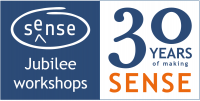Applying plain language principles to creating accessible, reader-friendly texts
Applying plain language principles to creating accessible, reader-friendly texts
John Linnegar, Belgium
‘The message is important, not the fancy language wrapped around it.’ (George Orwell)
It’s astonishing how may writers feel they need to ‘dress up’ their writing to the extent that they lose their natural (aka plain) voice completely! Their reasons are no doubt many: from wanting to impress to needing to sound important or authoritative – and sometimes even because their boss or professor ‘writes like that, so it must be good’! But in this day and age we should rather be ‘dressing down’ writing to make it more accessible and flow better. Where writers themselves are incapable of doing so, the task usually falls to us wordsmiths to dress (not dumb!) writing down.
We need to make authors’ words clear and straightforward, using only as many words as are necessary. Plain Language helps us to do so by dispensing with the ‘fancy language wrapped around their words’: obscurity, inflated vocabulary and convoluted sentence constructions. Applying Plain Language principles systematically, our aim is to render the authors’ messages readily understood at first reading.
By the end of this workshop you will be able, with confidence, to:
- convert long, complex sentences into shorter compound or simple ones;
- replace, where possible, passive voice (O-V-S) constructions with active ones (S-V-O);
- remove embedded clauses from complex sentences;
- replace ‘difficult’ polysyllabic words and jargon with more everyday, accessible synonyms (e.g. ‘remuneration’ with ‘pay’ or ‘wage’);
- make impenetrable noun strings accessible by inserting prepositions and articles into them;
- supplant nounisms (nominalisations) with healthier vigorous verb equivalents (e.g. ‘invitation’ with ‘invite’);
- dispense with archaisms such as ‘aforesaid’, ‘herein’, ‘thereby’, ‘whereafter’;
- find ways to introduce useful visual elements (e.g. lists).
Fundamentally, we wordsmiths will be asking – and answering – the questions ‘Who is the audience and what are their needs?’ In so doing, we’ll be using the approach our writers should have adopted in the first place: a reader-centredness.
In this 3.5-hour workshop, you’ll have an opportunity to put these principles into practice.
About the presenter

An author and a passionate copy-editor with some 40+ years’ of manuscript improvement behind him, John Linnegar is a former teacher of English at secondary school and undergraduate levels. His specialty as an editor is law. In 2009 he published a book on common errors committed by writers in English in South Africa (NB Publishers, reprinted 2013); in 2012 he co-authored Text Editing: A Handbook for Students and Practitioners (UA Press) and in 2019, together with Ken McGillivray, wrote and published grammar, punctuation and all that jazz … (MLA Publishers). He contributes regular articles on the usage and abusage of the English language to professional bodies.

